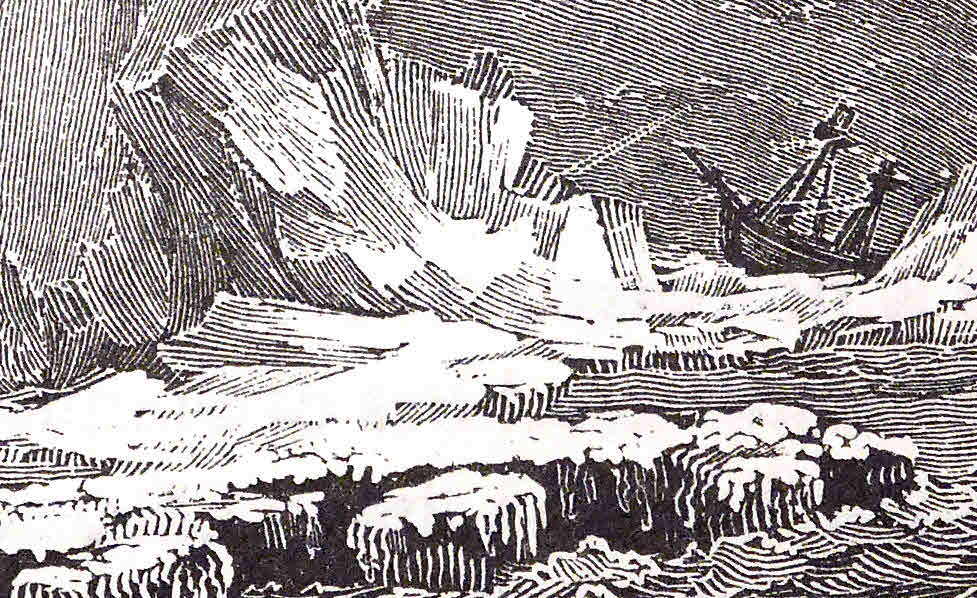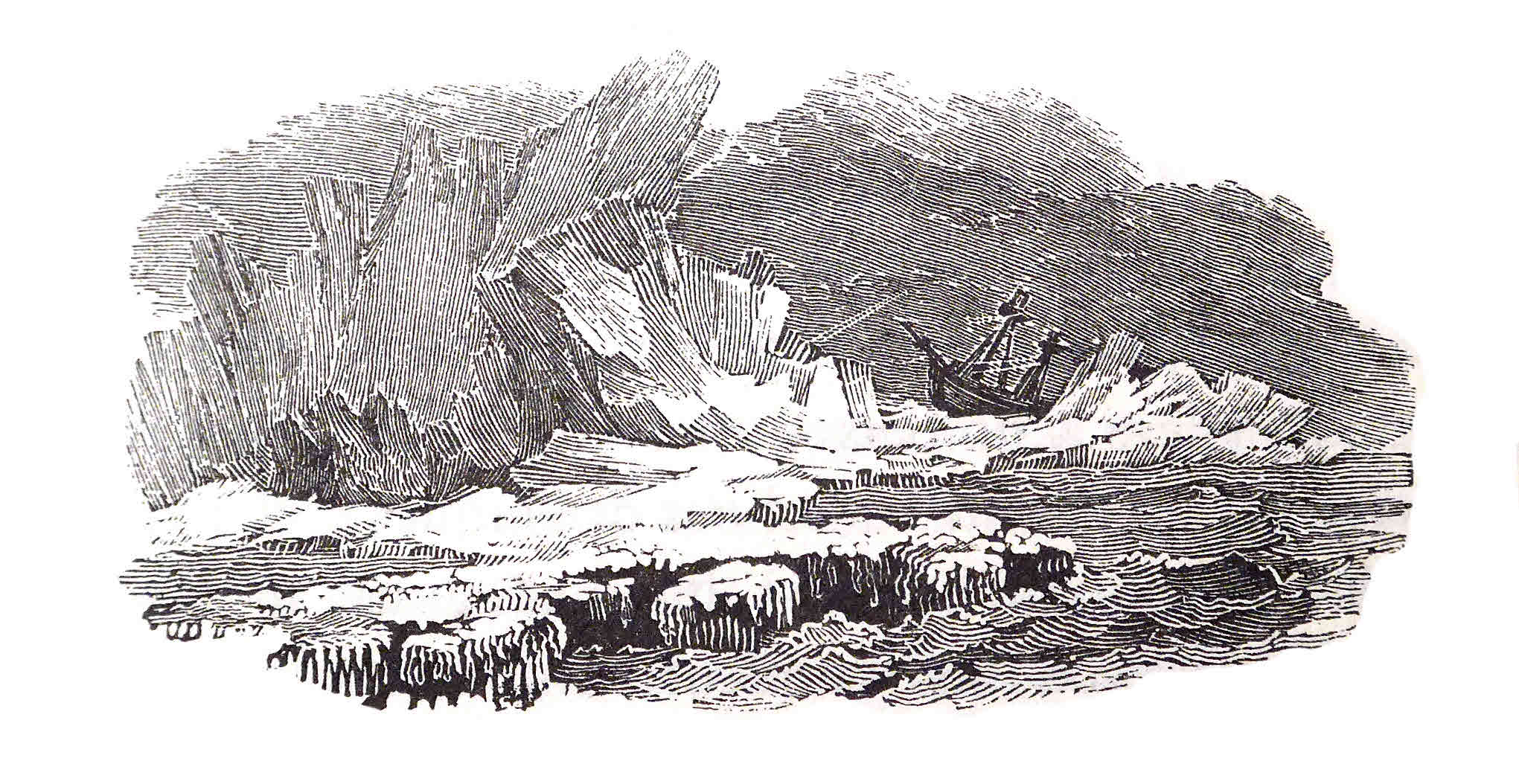
 Bookmark this on Delicious
Bookmark this on Delicious
 Recommend to StumbleUpon
Recommend to StumbleUpon
I have recently become aware of the remarkable Thomas Bewick of Newcastle.
What is on this page may not be tightly focused on Svalbard, but I hope you will see the connection, and that you will enjoy the digression.
Past illuminates present. I was a poor history student. (Inattentive, not impecunious.)
Recently, I have started collecting old books, and they have made the past interesting to me at last.
Bewick created significant and beautiful things... and published some reflections on the polar regions around 1800. I hope this will be of interest, even if not strictly "relevant" to the trip.
Shortly before the trip to Svalbard, I happened to be reading Nature's Engraver, by Jenny Uglow. (A digression from the digression: By pure good luck, I happened to start reading Jenny Uglow's Nature's Engraver immediately after my first trip to Newcastle (in northern England)... which is where Bewick spent his life. It was strange being in modern Newcastle while reading about the town it was, long ago.)
Ms. Uglow has left me fascinated by Bewick. While he is best known for his woodcut engravings, he was a pioneer in the art and science of classifying living things, producing first what we might today call an encyclopedia of vertebrates, and subsequently several great "bird books", among the first ever. It is hard to imagine, but still true, that at the time, a naturalist in Paris might know a given species of bird by one name, while naturalists in, say, Newcastle knew the same species by a different name... and although they of course corresponded, and even exchanged stuffed specimens, there was nothing like the "universal" system of naming that we have in place today. Today, if you can find an "expert", they will tell you, categorically, what bird it is you have in your cage. In Bewick's time, names were a more local affair, and studies of things like migration therefor complicated.
His "Water Birds", which was not his first great work, went to the printer in 1803. In the preface, Bewick speaks of how when he did his book about land birds, he was able to present a more or less complete picture. However, when it came to writing about water birds, in particular sea birds, and ducks which seemed to "migrate", he explains that he was thwarted in any attempt to tell give the complete picture.
(The whole concept of migration was still new, still a matter of debate and study... but anyone could see ducks heading north at about the time they became scarce in a given locale. And everyone knew that the land to the north ran out.)
So- these birds evaded study by setting out across the sea. Bewick further believed that they spent part of the year in the far north.
In the 1950s, humanity began to think that voyaging into space might become possible.
Bewick was writing in 1803. Humans did not reach the North Pole for more than 100 years... a century in which "progress" was far slower than the rate we are used to today.
I think it fair to suggest that the idea of going to the north pole was at least as strange, in 1803, as was the idea of going to the moon was in 1953.
Of the northern climes, to which Bewick believed some of the sea birds went, he said...
"There a barrier is put to further enquiry, beyond which the prying eye of man must not look, and there his imagination only must take the view, to supply the place of reality. In these forlorn regions of unknowable ((Bewick's emphasis)) dreary space, this reservoir of frost and snow, where firm fields of ice, the accumulation of centuries of winters... surround the pole, and concentrate the multiplied rigors of extreme cold; even here, so far as human intelligence have been able to penetrate, there appears to subsist an abundance of animals, in the air, and in the waters." (Quoted by Ms Uglow, on pg. 304 of her book)
Well... slightly more than 200 years later, I am glad to report that Bewick was exactly right about the abundance of animals, even if he wasn't able to imagine the limits of the prying eye of man.
The summer time profusion of life on Svalbard, especially avian life, was extraordinary. (If you can fly in and out, to enjoy just the good months, you enjoy a relatively predator free environment, with a bumper crop of insects to feed to your young.)
Bewick should be known for many things. He seems to have been a good man, a good father, a good employer. Also, he embraced the then radical, even scandalous, view that the world was millions of centuries old. (Charles Lyell, 1797- 1875, is better known for espousing this theory. Bewick lived 1753-1828.. did he hear of Lyell's theory, or come to it independently? Besides his engraving and writing, he was involved in coal mines, and knew of shell fossils found deep in the earth.) But he is most known for the art in his woodcuts.
Returning to this page's topic, here was how he imagined the northern seas to be. I will first give you just a detail to marvel over. The original was carved into the end-grain of a block of wood. The part of the block which produced the bit shown was about 24 mm high, less than an inch. How did he manage those many, tiny, parallel groves? (The white bits are where he carved wood away.)

... and now I will show you the whole of the image from which the above was taken. The original is a mere 8 cm (3 inches) across.

To me, that he could achieve such masterpiece in any medium, at any scale, is wondrous. And what a pretty irony that I should be reading Ms Uglow's vivid and readable account of Bewick's life and times, in which the comments on the north are but a tiny fragment, at just the time I was going where he went so successfully, with imagination alone. (Her Lunar Men, about great minds of the Enlightenment, who lived near Birminghan, knew one another, is also excellent.)
(If you came here from the Top Page, it is probably still open "under" this one. Just close the current tab, and you should be returned to the Top Page.)
![]() Page WILL BE been tested for compliance with INDUSTRY (not MS-only) standards, using the free, publicly accessible validator at validator.w3.org. Mostly passes. There were two "unknown attributes" in Google Translate and Google+ button code. Sigh.
Page WILL BE been tested for compliance with INDUSTRY (not MS-only) standards, using the free, publicly accessible validator at validator.w3.org. Mostly passes. There were two "unknown attributes" in Google Translate and Google+ button code. Sigh.